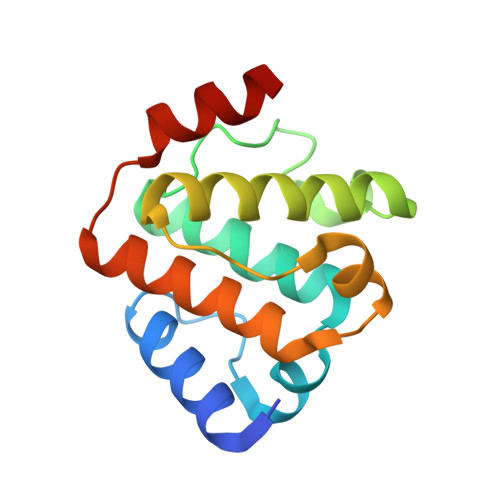Intraflagellar Transport Proteins 172, 80, 57, 54, 38, and 20 Form a Stable Tubulin-Binding Ift-B2 Complex.
Taschner, M., Weber, K., Mourao, A., Vetter, M., Awasthi, M., Stiegler, M., Bhogaraju, S., Lorentzen, E.(2016) EMBO J 35: 773
- PubMed: 26912722
- DOI: https://doi.org/10.15252/embj.201593164
- Primary Citation of Related Structures:
5FMR, 5FMS, 5FMT, 5FMU - PubMed Abstract:
Intraflagellar transport (IFT) relies on the IFT complex and is required for ciliogenesis. The IFT-B complex consists of 9-10 stably associated core subunits and six "peripheral" subunits that were shown to dissociate from the core structure at moderate salt concentration. We purified the six "peripheral"IFT-B subunits of Chlamydomonas reinhardtiias recombinant proteins and show that they form a stable complex independently of the IFT-B core. We suggest a nomenclature of IFT-B1 (core) and IFT-B2 (peripheral) for the two IFT-B subcomplexes. We demonstrate that IFT88, together with the N-terminal domain of IFT52, is necessary to bridge the interaction between IFT-B1 and B2. The crystal structure of IFT52N reveals highly conserved residues critical for IFT-B1/IFT-B2 complex formation. Furthermore, we show that of the three IFT-B2 subunits containing a calponin homology (CH) domain (IFT38, 54, and 57), only IFT54 binds αβ-tubulin as a potential IFT cargo, whereas the CH domains of IFT38 and IFT57 mediate the interaction with IFT80 and IFT172, respectively. Crystal structures of IFT54 CH domains reveal that tubulin binding is mediated by basic surface-exposed residues.
Organizational Affiliation:
Department of Structural Cell Biology, Max-Planck-Institute of Biochemistry, Martinsried, Germany.















